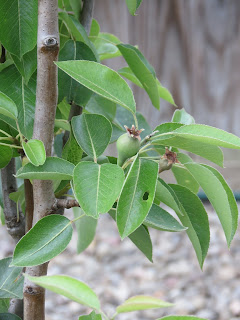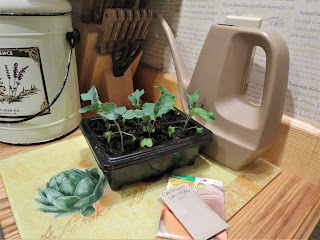 |
| All ready to be tucked back in |
 |
| Luscious Cabbages |
Blogger loaded the rest of these photos inside out but I'm too lazy to shuffle them back to my normal order..
 |
| Bed #12 Jade Bush beans seeded yesterday 05/25 with Sweet Alyssum for ground cover |
 |
| Bed #11 Lettuce transplanted and preparing to transplant the cucumbers and Cue Ball summer squash that are just now peeping through the soil. I've found that starting them in pots with potting mix mere feet from the bed they are destined for saves a lot of frustration. They just germinate better in pots than in the raise bed soil where they kept getting buried too deeply by rain. |
 |
| Bed #10 Carminat and Monte Gusto Pole Beans seeded 05/22 with Alaska Nasturtium transplants along the sides for ground cover. I harvested these Nasturtium seeds in 2019 when I cleaned the tomato bed. |
 |
| Beds #9 Third and Fourth planting of Penelope Peas with old lettuce seeds scattered down each side. seeded 04/10 and 04/17 Beds #7 and #8 are the Cauliflower and Cabbage beds pictured above. |
 |
| Bed #6 Second and Third planting of Penelope Peas w/ Lettuce seeded 03/29 and 04/10 I carefully spaced the peas at 2 inches in this bed as an experiment. Generally I scatter seeds much more thickly |
 |
| Bed #5 Northern Yellow Xtra-Sweet Hybrid Sweet Corn (sh2) 67 Days seeded 05/17 |
 |
| Bed #4 First and Second planting of Penelope Peas w/Lettuce seeded 03/15 and 03/29 |
 |
| Bed #3 Fordhook 242 Lima Beans (Butter Beans) seeded 05/21 These started showing yesterday and today I added leaf mulch |
 |
| Bed #2 Honey 'n Pearl Hybrid Sweet Corn Seed (sh2) 78 days seeded 05/22 It was just starting to poke through this morning before I added some compost |
 |
| Bed #1 Home to the potato grow bags This bed had a serious Purslane invasion last year and I'm hoping to smother it. Varieties from Maine Potato Lady Satina Purple Sun Kennebec GoldRush Russet Red Pontiac |
 |
| The other half of the potatoes back in the original tater patch |
 |
| Strawberries are appearing |
 |
| And a baby pear! |



































